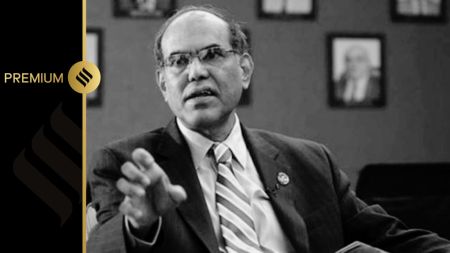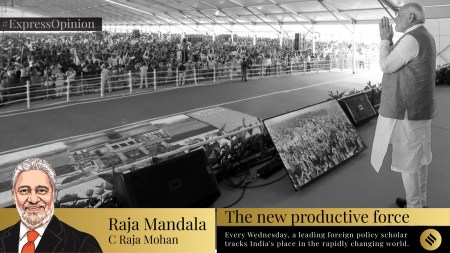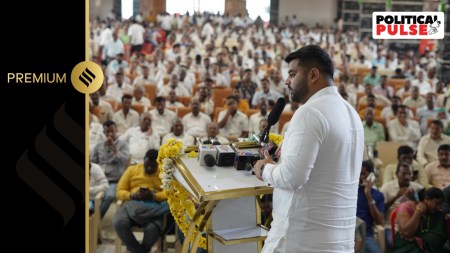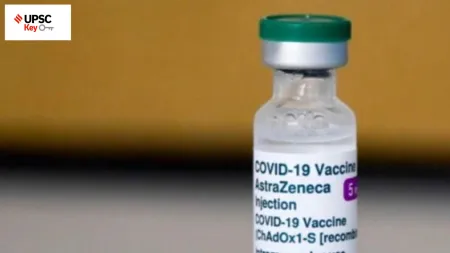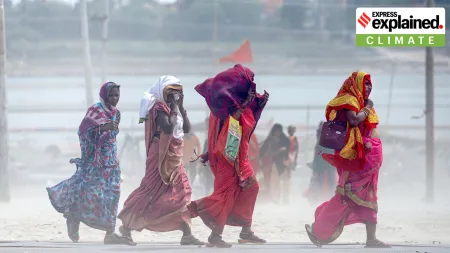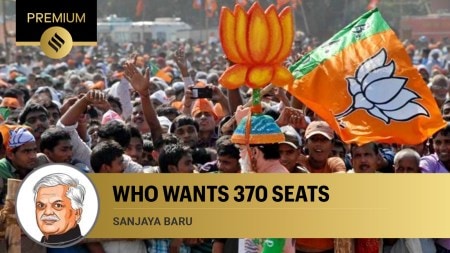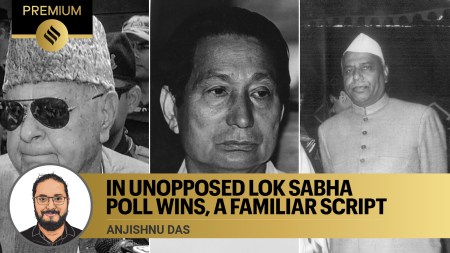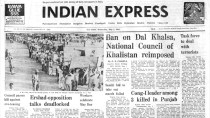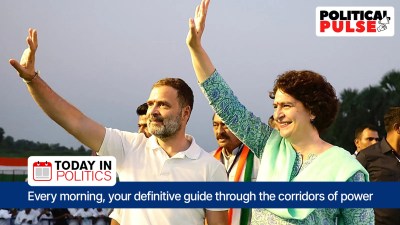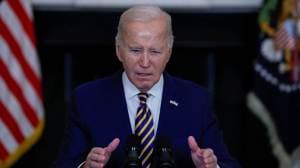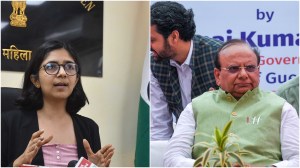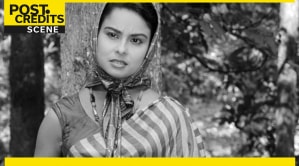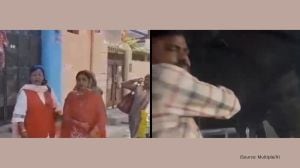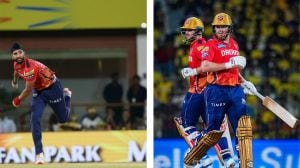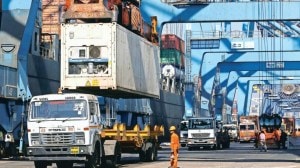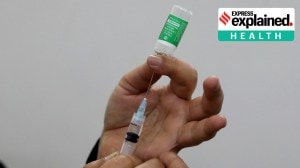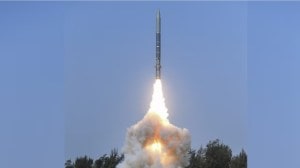- India
- International
The return of caste to Bengal
Issues specifically related to SC-OBC communities are featuring again in electoral politics in the state, with implications for both BJP and Trinamool.
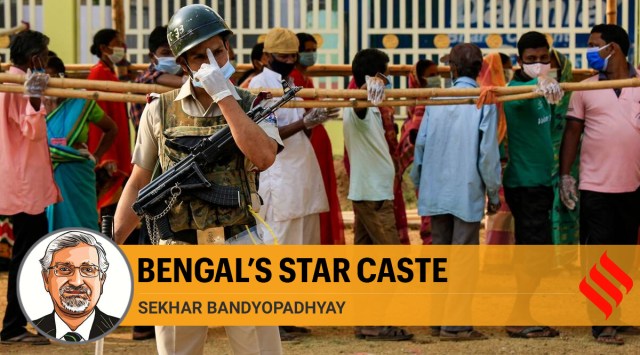 A BSF soldier stands guard as voters stand in queue to cast their votes at a polling booth during first phase elections in West Bengal (AP)
A BSF soldier stands guard as voters stand in queue to cast their votes at a polling booth during first phase elections in West Bengal (AP)It was in the early colonial period that caste had entered the modern arena of organised politics in Bengal. The new political elite, the bhadralok — who mostly belonged to the three upper castes of Brahmin, Kayastha and Baidya — demanded democratic reforms, but fiercely guarded their own privileged position by denying the middle and lower ranking castes their fair share of power. The latter from the early 20th century began to organise themselves into exclusive caste associations. Among them were several Dalit castes, such as the Namasudras in eastern Bengal and the Rajbansis in the north. These movements worked for their self-improvement and stayed away from Congress politics. In 1937 a Dalit-Muslim alliance in the legislative assembly effectively blocked the Congress from assuming power.
But the situation changed with the onset of Partition politics which divided the autonomous Scheduled Caste movement. While a section of the Dalits under the leadership of Namasudra leader Jogendra Nath Mandal joined Dr Ambedkar’s All India Scheduled Caste Federation and opposed Partition, another large segment under the leadership of P R Thakur, also a Namasudra, supported the Hindu Mahasabha-Congress instigated campaign to divide Bengal and create West Bengal as a Hindu majority state within India.
Partition did not help the Bengali Scheduled Castes. While the Rajbansi territory was divided down the middle, the entire Namasudra habitat went to East Pakistan. But they did not migrate immediately, as they lacked financial and social capital to do so. The situation changed after the riots of 1950, which triggered a mass exodus of Dalit peasants from East to West Bengal. Unfortunately, on arrival in India these Dalit refugees did not get a fair deal from the Indian state. They were first put in refugee camps and then dispersed to Andaman Island and Dandakaranya for resettlement. Those who did not go to camps settled in the border districts of North 24-Parganas and Nadia. In post-Partition West Bengal, the main attention of Dalit leaders like Mandal and Thakur therefore focused more on the rehabilitation issue; refugee agitations displaced caste movements from West Bengal’s public space.
But caste did not disappear, as Dalit empowerment remained a far cry. P R Thakur became disillusioned with the Congress and decided to reinvigorate the Matua movement. It was an anti-Brahmanical heterodox religious sect for the Dalits, started by his great grandfather and grandfather — Harichand and Guruchand Thakur. By the 1990s the Namasudras regrouped themselves under its banner and were in a better position to negotiate with the mainstream political parties.
In the 2011 assembly election, the Matua support went to Trinamool Congress (TMC), as Mamata Banerjee, unlike her communist adversaries, had no qualms in becoming a member of the Matua Mahasangha and touching the feet of Boro ma or Binapani Debi, the widow of P R Thakur and the then head of the sect, in an open public meeting. But although she promised them many things, being primarily a state power, she could not offer any real help to address their major grievance against the Citizenship Amendment Act of 2003, passed by the previous NDA government, announcing March 1971 as the cut-off date of arrival for granting citizenship to the refugees.

Historically, Dalit support for mainstream political parties in Bengal had always been strategic, rather than unconditional. Since 2009, the Matuas have been articulating their grievances against the citizenship act, as Dalit refugees faced continuous harassment, some of them even facing prosecution. While the TMC-led state government could not offer them any reprieve in such matters, BJP offered them CAA 2019 as a final solution for their citizenship-related woes. Hence, from the 2019 parliamentary election, Matua support began to shift to the BJP. In the current election, also, the citizenship issue is expected to influence outcomes in about 30 seats. Due to memories of post-Partition violence, Dalit-Muslim relations are already at a low point in these border districts.
But there is another issue. The Matua Mahasangha is actually an oppositional religious movement that is against Brahmin domination and Vedic Hinduism. So, one would suspect that they would find it difficult to support Hindutva ideology. But not all of them position themselves firmly within a Matua-Hindu binary in everyday life. And Modi’s symbolic gesture to visit Orakandi in Bangladesh, the birthplace of Guruchand Thakur, may appeal to the emotions of Matua pracharaks and gosains with grassroots level networks, tilting the balance for BJP.
But my colleagues on the field also tell me that the Matuas are no longer a united house. The Thakur family which leads this movement is divided. There are now many Ambedkarites in the community. Many of them know that the proposed CAA-NRC regime is unlikely to ease their problems. A radical Dalit literary movement has emerged in recent years and it certainly has a following among the educated Dalit refugees. But their votes will possibly be split between TMC and the Left-Congress alliance.
The other issue is the extension of the OBC list, ostensibly to rope in the Mahishyas and a few other Hindu castes. A section of the Chasi Kaibarttas chose to call themselves Mahishyas and got that nomenclature recognised in the 1911 census. It was a heterogeneous group, consisting of landed magnates and small farmers in Medinipur as well as industrial entrepreneurs and working classes in Howrah. A politically powerful upwardly mobile elite were opposed to being labelled as “depressed classes” because of the social stigma attached to it. Even today the group is divided on the OBC issue, although it is likely that the lower middle classes among them see the advantages of reservation. Since both TMC and BJP have offered to include them in the OBC list, their entry is almost guaranteed, and therefore it is unlikely to affect their voting behaviour. The Mahishyas or any other OBC in West Bengal have never voted as a united vote bank, and today the Mahishyas are an even more diverse group.
It is however interesting to notice that issues specifically related to SC-OBC communities are featuring again in electoral politics. Caste, politicians realise, has not disappeared from Bengal. How is it going to impact election results, only time will tell.
This article first appeared in the print edition on April 1, 2021 under the title ‘Bengal’s star caste’. The writer is emeritus professor of history, Victoria University of Wellington
EXPRESS OPINION
More Explained
May 02: Latest News
- 01
- 02
- 03
- 04
- 05


